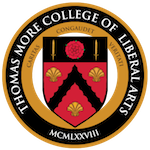Irony was strained the United Nations’ “Earth Summit” in 1997 when President Clinton and President Chirac and Prime Minister Blair jointly issued a warning about the proliferation of gas. Long before, Charles Dickens coined the phrase “All gas and gaiters.” In days when clergymen dressed better, gaiters were associated with the higher ranks of them, and it may be unfeeling though not irrational to link them, like politicians, with the kind of prolix twaddle for which gas is a vivid metaphor. Here in speaking of a link, I fear one commits a pun because the world’s leading expert on gaseousness is Colin Leakey, whose name itself is a word play, and whose mother Mary Leakey discovered a jaw bone in the Olduvai Gorge in Tanzania, which she thought might have belonged to the ephemeral “missing link.” Her son’s research into leaking gas has so far been more substantial. In the year of the UN Earth Summit, his invention of a “Flatometer” that measures the production of methane from digested legumes was granted a royal patent, making him even more conspicuous in the public eye than his conservationist brother Richard, who is known widely for his efforts to save the East African elephant.
Colin’s arcane work has centered on the bean. The only Mr. Bean of whom I am aware in the cultural annals, besides Judge Roy Bean of western saga and the pseudonymous comedian and the actor Orson Bean, is Tarleton Hoffman Bean (1846-1916) who, strangely enough, was curator of the New York Aquarium. Bean’s English contemporary was the ichthyologist Jonathan Couch, grandfather of Arthur Quiller-Couch, the literary critic who as an Oxford undergraduate occupied the former rooms of John Henry Newman in Trinity College. No one devoted more energy as an essayist to deflating bombastic and borborygmic speech than Quiller-Couch. In the year of Tarleton Bean’s death, the Kaiser, having consented to the use of poison gas, appointed General von Beckendorff and von Hindenburg army chief of staff. The general’s namesake dirigible blew up over Lakehurst, New Jersey, in 1937 as the result of a leaky hydrogen gas valve. H.L. Mencken’s Treatise on Right and Wrong was published coincidentally on the death of von Hindenburg in 1934; its author used many ingenious synonyms for methane in references to Eleanor Roosevelt.
Matilda Ayrton, foundress of a famous school for midwives in Japan in 1873, and Professor Bean were born in the same year. On the occasion of her birth, gas lighting was introduced in the Capitol in Washington and a gas explosion in the Carlsrube Theater in St. Petersburg took 200 lives. She died quietly in 1883 and her husband married Hertha, who pioneered the study of sand ripples and then invented the anti-gas fan. As Hertha probably knew more than any woman of her day about the properties of nitrous oxide, popularly known as “laughing gas,” it is fascinating that her maiden name was the same as the Marx brothers, just as her antecedent Matilda’s maiden name was the same as the comic actor Charles Spencer “Charlie” Chaplin.
Although Sir Robert Walpole, later first Earl of Orford, was born in 1676 only months before Stephen Hales, who analyzed legumes in his Vegetable Staticks and invented an artificial ventilator, he was considerably less scientific in his obsession with internal eructations, a form of hypochondria the French call la maladie sans maladie. While J.H. Plumb’s masterful two essays on Walpole’s wine cellars and kitchens are unsurpassed and render any domestic library without them incomplete, he neglects to mention this odd item: The atrabilious Earl blamed all his problems on gallstones and believed he could be cured by consuming a certain mathematical dosage of soap daily. By the time of his death, Walpole had consumed 180 carefully measured pounds of refined grease. Eighteen years later, Mozart composed his first symphony while lodging in London in 180 Ebury Street. The significance of this may be gossamer, but it can be a welcome distraction when one is forced to sit through the next longwinded speech.
Like Yeats withdrawing to Innisfree when he wearied of the world’s fanfaronades, all of us have moments when we want to rest where silence is more eloquent than the fumy speeches of a fuliginous world. Our age of email and Web sites is also an age of logorrhea. All communications and no communion. If the gaiters are gone, the rhetorical gas is gassier than ever. Clerics of every profession fill more journals and hold more conferences than the mind of man needs. Perhaps our age has entered its old age, like Shakespeare’s senile man who “pipes and whistles in his sound.” Verbosity and inanity go together, and were I to write more I should only prove my point.

